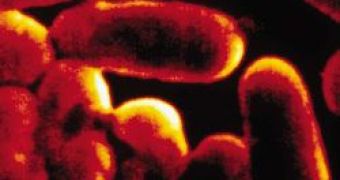Researchers led by a University of Cincinnati (UC) scientist say they have discovered what might be the "Achilles' heel" of a dangerous organism that lives in the lungs of cystic fibrosis patients, a fatal flaw that leaves the organism vulnerable to destruction by a common food preservative.
The Pseudomonas aeruginosa bacterium grows within the deadly, lung-clogging mucous found in the airways of cystic fibrosis patients and significantly weakens them.
The new study suggests that a mutation, known as mucA, in the organism also represents a fatal flaw that could help physicians clear the characteristic "goop" from the lungs of advanced cystic fibrosis patients.
This is possible because the same genetic mutation which makes Pseudomonas aeruginosa a 'microbial terrorist' resistant to antibiotics and white cells, also makes it vulnerable to slightly acid sodium nitrate, widely used in the curing of lunch meat, sausages and bacon.
"We believe that we have discovered the Achilles' heel of the formidable mucoid form of Pseudomonas aeruginosa, which could lead to improved treatment for cystic fibrosis airway disease. We can essentially say that this organism, which some people thought could never be beaten, can now be destroyed by nothing more exotic than a common food preservative" said Daniel Hassett, PhD and head of the research team.
"The lung-clogging, suffocating mucoid form of Pseudomonas aeruginosa essentially is a death sentence for cystic fibrosis patients because these bacteria are inherently antibiotic and white-cell resistant," Dr. Hassett added.

 14 DAY TRIAL //
14 DAY TRIAL //